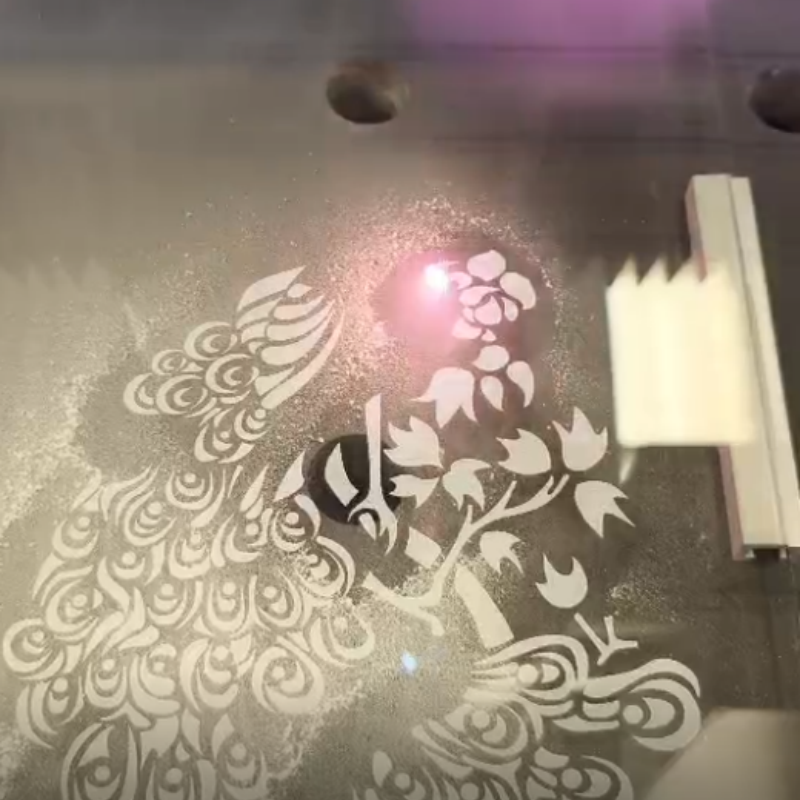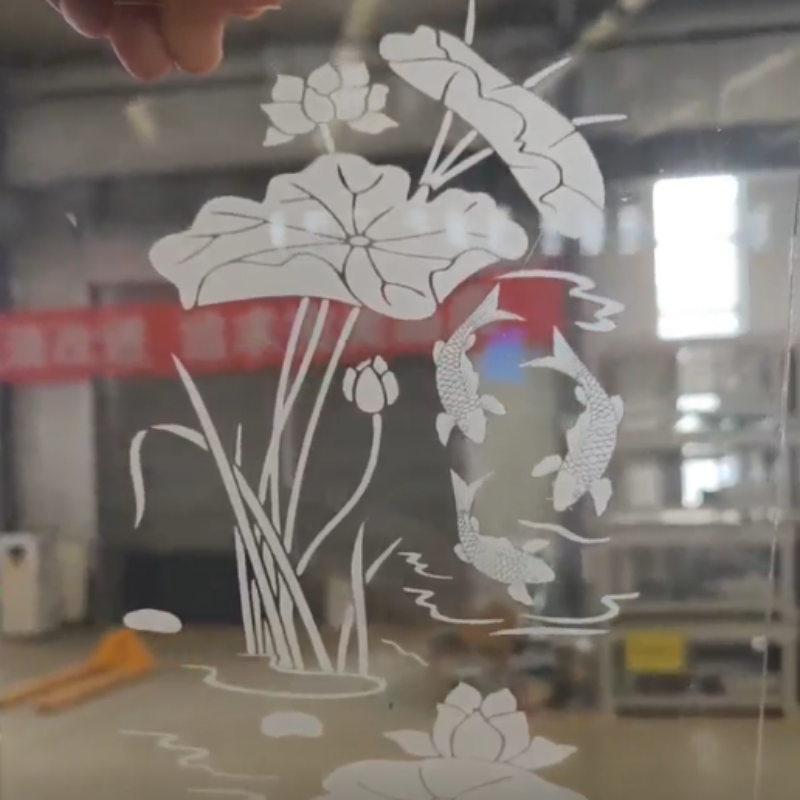Ⅰ. Equipment Principle and Parameter Setting
The laser frosting engraving machine uses a high-energy-density laser beam to irradiate the mirror surface, and the surface material is instantly vaporized or physically changed through the thermal effect of the laser, thereby forming a frosted effect. Before processing, it is necessary to set the core parameters such as laser power (usually 50-200W), scanning speed (500-2000mm/s), and spot diameter (0.1-1mm) in the control system according to the mirror material (such as glass, etc.) and design requirements. At the same time, import the sandblasting pattern or area through CAD or special design software to ensure that the laser is accurately processed according to the preset path.
Ⅱ. Mirror Pretreatment and Fixation
First, the mirror surface of the smart mirror is thoroughly cleaned, and a dust-free cloth is used with alcohol or deionized water to remove surface grease, dust and impurities to prevent impurities from affecting laser energy absorption and sandblasting uniformity. Then place the mirror on a high-precision workbench and fix it by vacuum adsorption or mechanical clamps to ensure that the mirror does not move during processing. For smart mirrors with electronic components, special protective covers are required to shield non-processing areas and components to prevent laser damage to circuits or other components.


Ⅲ. Laser Scanning and Sandblasting Operation
After starting the equipment, the laser head performs two-dimensional scanning along the X and Y axes under the control of the CNC system. The laser beam acts on the mirror surface point by point at the set frequency and energy density. When the laser energy is absorbed by the material, the surface material quickly heats up to the vaporization point, decomposes into gas and escapes instantly, or causes micro-nano-level rough structures on the surface of the material. For areas that require different frosting effects, a gradual effect can be achieved by adjusting the laser energy, such as using lower power in the edge area to form a soft transition, and using higher power in the main pattern area to enhance the frosting texture. During the processing, the built-in visual monitoring system will capture the mirror state in real time to ensure that the sandblasting trajectory is consistent with the design.
Ⅳ. Real-time Quality Monitoring and Parameter Adjustment
During the laser sandblasting process, the built-in sensor of the equipment will monitor the laser power stability, processing temperature and mirror surface changes in real time. For example, infrared thermometers are used to detect the temperature of the processing area to avoid local overheating and cause mirror cracks; optical sensors are used to analyze the surface roughness and transmittance after sandblasting. If it is found that the sandblasting effect of a certain area is not as expected, the system will automatically adjust the laser parameters of subsequent scans (such as increasing power or slowing down speed) to compensate. In addition, after each batch of processing is completed, sampling is required for manual quality inspection to check the pattern clarity, sandblasting uniformity, and whether there are signs of thermal damage.
Ⅴ. Post-processing and Performance Testing
After sandblasting, high-pressure dust-free air is used to blow away the fine debris remaining on the mirror surface, and deionized water is used for ultrasonic cleaning when necessary to ensure the surface is clean. After drying, the mirror surface is subjected to a number of performance tests: the haze value of the frosted surface is measured using a haze meter (usually required to be ≥95%), and the transmittance is tested with a transmittance meter to see if the transmittance meets the design standards; a friction resistance test is conducted, using a special friction meter to rub the sanded surface with a specified force and number of times to observe whether there is any discoloration or shedding of the frosted layer; for smart mirrors with conductive functions, it is also necessary to test whether laser sandblasting affects the conductivity of the circuit to ensure normal function.




